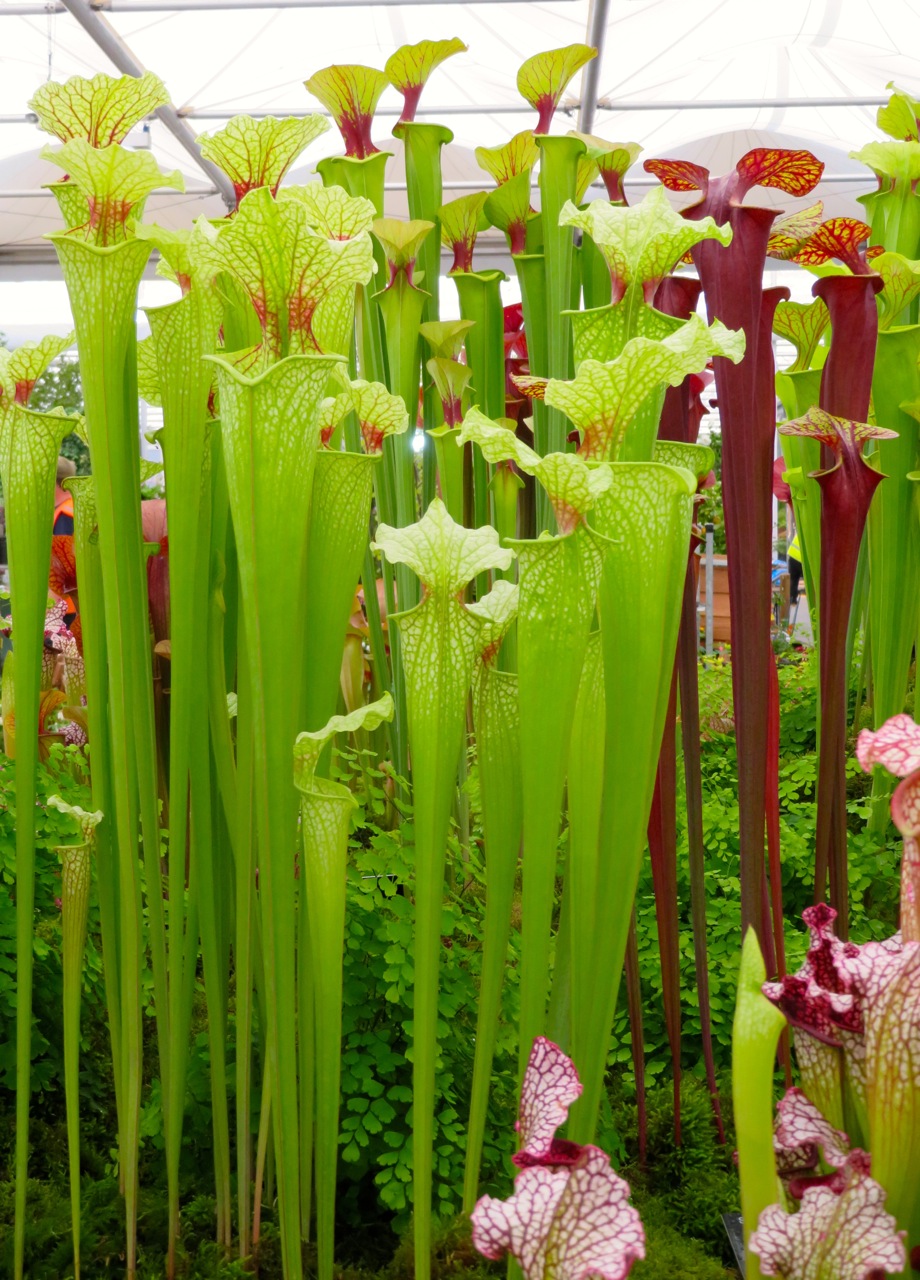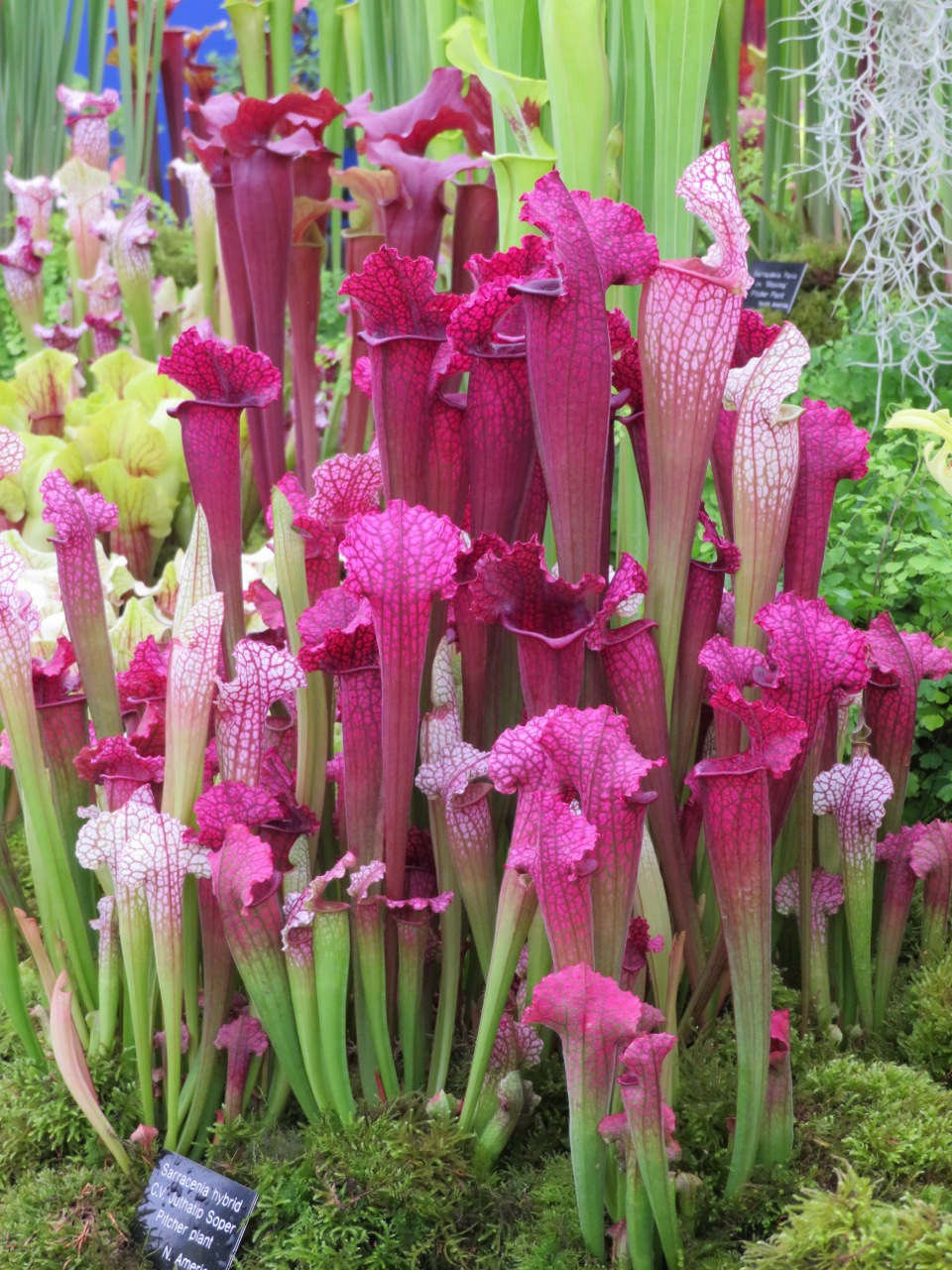
I’ve just written an eco-friendly gardening book, The Living Jigsaw, and I got the chance to take part in the red-button Springwatch and was interviewed by a delightful man called Brett Westwood. I felt I already knew Brett. One of his books, Tweet of the Day, sits on my bedside table because in my youth I was a twitcher – often off to look at the rare and unusual in some far flung corner of Britain. He also presents Radio 4’s The Living World, a programme I often listen to early on Sunday mornings.
Brett, who has a shady town garden, sent me a picture of one of his favourite plants, Asarum splendens, also known as the Chinese Wild Ginger. The foliage is rather similar to a some cyclamen foliage, frosted in silver here and there, so far so good. However the dingy, dull flowers hide away at the bottom under the foliage, like ugly sisters should, suggesting that they’re pollinated by non-flying insects such as beetles, ants or even slugs. The latter are really keen on cobbling this and they’ve nibbled Brett’s.
I looked Asarum splendens up on Google and couldn’t help noticing that on www.hardytropicals.co.uk the contributors to the forum had names like Mark, Pete, Frank, Don, Darren and Simon. In other words they were men. It confirmed that the male race is attracted to an entirely different type of plant and if you’re lucky enough to find yourself in The Great Pavilion at The Chelsea Flower Show you’ll see them drooling over bonsai, marvelling at less-than spectacular wild orchids, sizing up at the cacti ( the pricklier and larger the better) and popping their eyes at carnivorous plants whilst we ladies go for the roses, sweet peas and clematis.
Matthew Soper is the most successful exhibitor of carnivorous plants and his Hampshire Carnivorous Plants (www.hantsflytrap.com) exhibits have earned him a tally of a hundred RHS Gold Medals including 19 Chelsea Golds. This year Matthew broke with tradition and left the outer walls of The Great Pavilion and staged a circular exhibit in the middle of the hall. I literally saw his carnivorous plants in a new light, for I could see the veins and colours on these almost sci-fi plants for the very first time. The combination of back-lit reds, rhubarb pinks and acid-yellows, usually lost against the black backdrop, shone out.
In the buzz of a fly I was converted to carnivorous plants, particularly when I heard that Matthew grows many of them in unheated conditions that are frost-free. In March they are completely dormant, with nothing to show, and then they surge into life. I am the proud owner of four pitcher plants, or sarracenias, raised from seed by a fellow Hardy Plant Society member. They apparently take 6 -7 years so I can appreciate the effort having raised my own trilliums and peonies. My sarracenias creep into life, but they stay out all winter so they probably have to fight back from the edge of death.
The most colourful sarracenias are the hybrids and their names include words like purple-tube, black tube, ASBO, all-red and scarlet bell.
Sarracenia hybrids are also the easiest carnivorous plants to start off with and the hybrids produce more pitchers than the straight species, due to having hybrid vigour. Matthew recommends “keeping them in a bright sunny position for good strong colourful growth and standing the potted plants in a tray of 2-3cm of rainwater from the end of February to around the end of October, when they’re in full growth.” Rainwater is an essential, not tap water, and my four pathetic sarracenias stand in saucers filled from water-butt water. Sarracenias loose most of their foliage between November and February so this is the time to trim them back. They need to be kept cold and just damp, rather than wet, during their winter rest period so a Hartley greenhouse is perfect. They can be repotted in February or March into a specialist compost with a low nutrient content, such as COM1 – available from Hampshire Carnivorous Plants.
The most popular carnivorous plant is the Venus Fly Trap (Dionaea muscipula) and this is a plant beloved of schoolboys. The jaws, looking rather like wide smiles, slant downwards rather slyly and they have bristled yellow tips. Once these sense movement these clam-shaped smiles spring shut and Matthew adds that “you can feed them with a odd live fly now and again if you like.” First catch your fly though. The flowers need to be removed in spring, because they weaken the plant, but other than that they are treated like sarracenias in the winter.
I can almost imagine having a Venus Fly Trap on the kitchen windowsill, although I’d be tempted to prod it about with a spoon in the hopes of seeing it spring shut. And this type of tampering is a cardinal crime in the world of carnivorous plants. I’m happy with my four pitcher plants, although one might be an ex-pitcher plant as it’s very slow to shoot, but I don’t know whether I could have a monkey cup, or nepenthes, because these always remind me of male reproductive parts! Matthew’s website tells us that their stronghold, a word that sends a little shudder through me as I write, is South East Asia, in particular the Islands of Borneo, Sumatra and the Philippines. Think hot and steamy – and that’s the weather.

Nepenthes are divided into two groups, highland varieties come from mountainous cloud forests and lowland varieties from tropical lowland swamp. Heat and humidity are essential to both because they experience 60-80% humidity in the wild. The lowland varieties need tropical warmth, ideally 22-25C, whilst the highland varieties need 21C. Nighttime temperatures are clement with lowland species needing 14C and lowland ones 10-12C. These are for the keen plantsman, rich enough to pay the electricity bills.
They look best dangling and pots or hanging baskets are both ideal and the compost is kept damp so these can’t stand in water. Treat them like orchids and water them every two days or so – with rainwater. Matthew recommends the following, N. x ventrata and N. sanguinea, for kitchen and bathroom windowsills. Another involuntary shudder at that thought too, but I know my friend Brett would probably love one and this clever naturalist could identify the fly as he dropped into the jaws. Me, I’ll stick to much girlier plants and grow the similarly named nepeta instead. Pretty, blue and bee-friendly.



